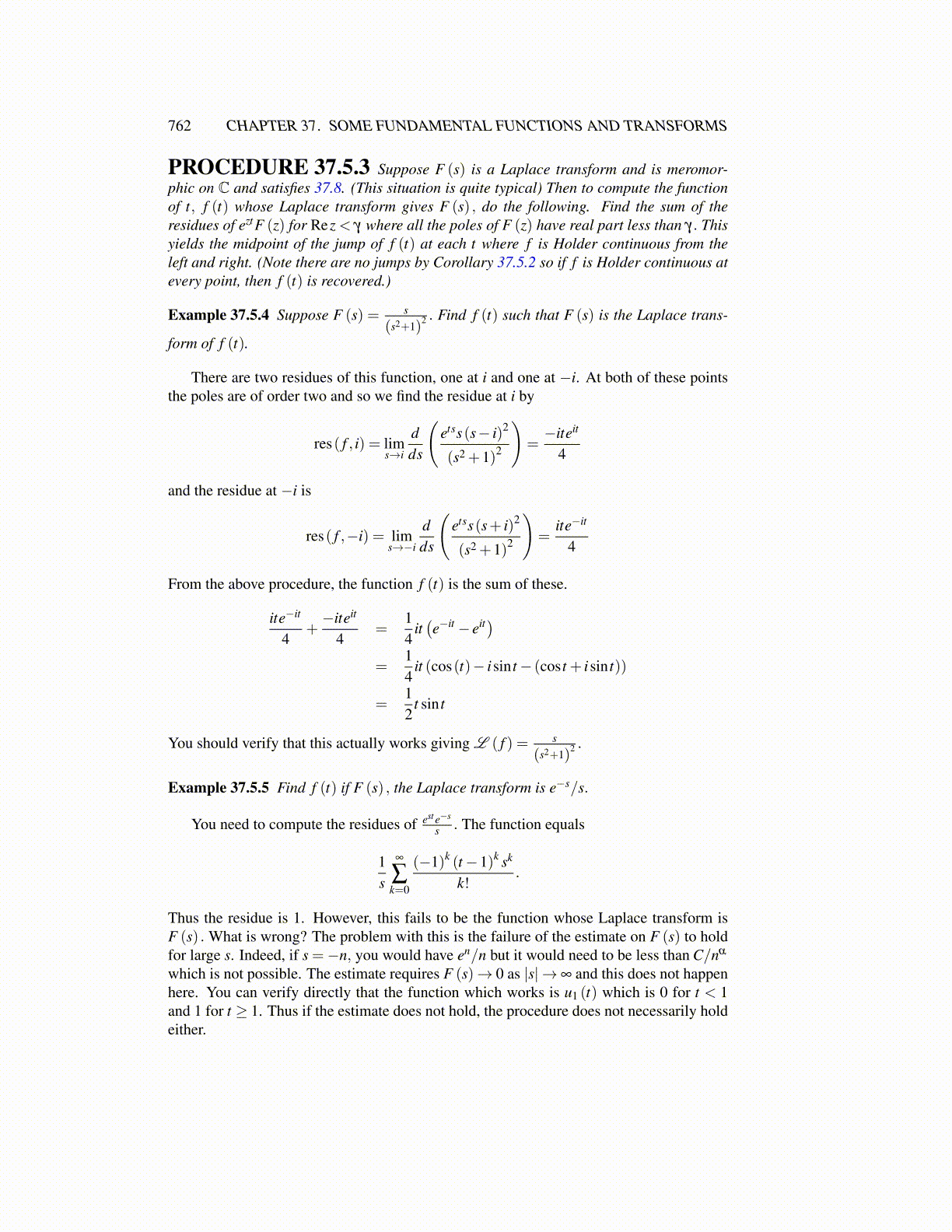
762 CHAPTER 37. SOME FUNDAMENTAL FUNCTIONS AND TRANSFORMS
PROCEDURE 37.5.3 Suppose F (s) is a Laplace transform and is meromor-phic on C and satisfies 37.8. (This situation is quite typical) Then to compute the functionof t, f (t) whose Laplace transform gives F (s) , do the following. Find the sum of theresidues of eztF (z) for Rez < γ where all the poles of F (z) have real part less than γ. Thisyields the midpoint of the jump of f (t) at each t where f is Holder continuous from theleft and right. (Note there are no jumps by Corollary 37.5.2 so if f is Holder continuous atevery point, then f (t) is recovered.)
Example 37.5.4 Suppose F (s) = s
(s2+1)2 . Find f (t) such that F (s) is the Laplace trans-
form of f (t).
There are two residues of this function, one at i and one at −i. At both of these pointsthe poles are of order two and so we find the residue at i by
res( f , i) = lims→i
dds
(etss(s− i)2
(s2 +1)2
)=−iteit
4
and the residue at −i is
res( f ,−i) = lims→−i
dds
(etss(s+ i)2
(s2 +1)2
)=
ite−it
4
From the above procedure, the function f (t) is the sum of these.
ite−it
4+−iteit
4=
14
it(e−it − eit)
=14
it (cos(t)− isin t− (cos t + isin t))
=12
t sin t
You should verify that this actually works giving L ( f ) = s
(s2+1)2 .
Example 37.5.5 Find f (t) if F (s) , the Laplace transform is e−s/s.
You need to compute the residues of est e−s
s . The function equals
1s
∞
∑k=0
(−1)k (t−1)k sk
k!.
Thus the residue is 1. However, this fails to be the function whose Laplace transform isF (s) . What is wrong? The problem with this is the failure of the estimate on F (s) to holdfor large s. Indeed, if s =−n, you would have en/n but it would need to be less than C/nα
which is not possible. The estimate requires F (s)→ 0 as |s| →∞ and this does not happenhere. You can verify directly that the function which works is u1 (t) which is 0 for t < 1and 1 for t ≥ 1. Thus if the estimate does not hold, the procedure does not necessarily holdeither.